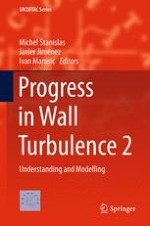2016 | OriginalPaper | Chapter
On Objective and Non-objective Kinematic Flow Classification Criteria
Authors : Ramon S. Martins, Anselmo S. Pereira, Gilmar Mompean, Laurent Thais, Roney L. Thompson
Published in: Progress in Wall Turbulence 2
Publisher: Springer International Publishing
Activate our intelligent search to find suitable subject content or patents.
Select sections of text to find matching patents with Artificial Intelligence. powered by
Select sections of text to find additional relevant content using AI-assisted search. powered by
